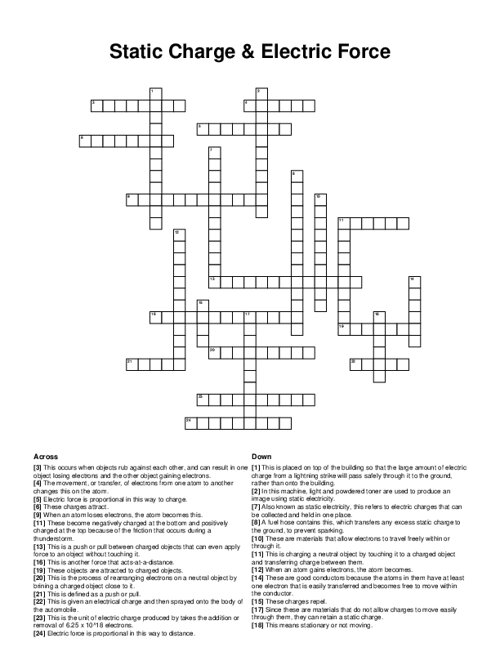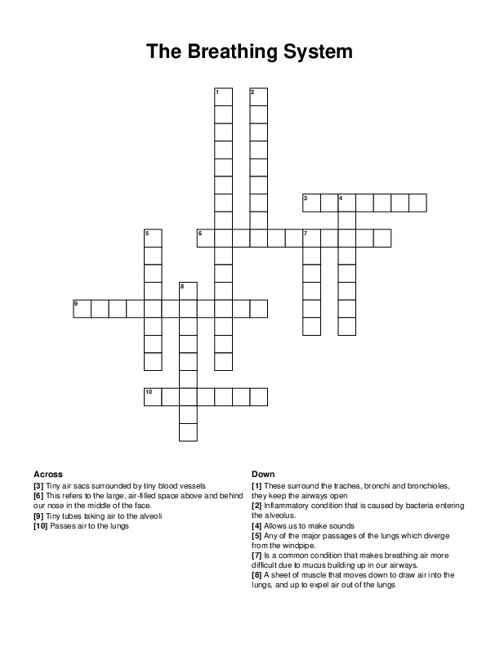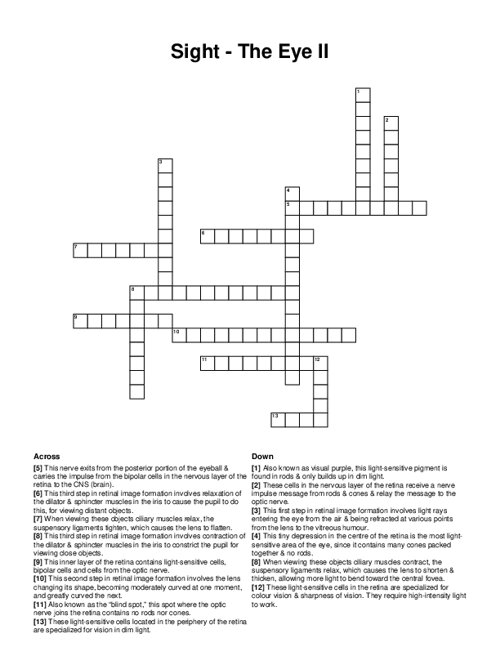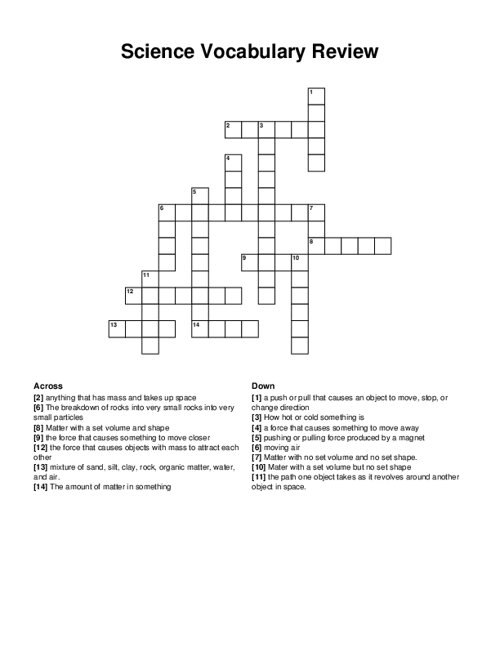Static Charge & Electric Force Crossword Puzzle
Download and print this Static Charge & Electric Force crossword puzzle.
Related puzzles:
QUESTIONS LIST:
- static : this means stationary or not moving.
- static charge : also known as static electricity, this refers to electric charges that can be collected and held in one place.
- charge : the movement, or transfer, of electrons from one atom to another changes this on the atom.
- more positive : when an atom loses electrons, the atom becomes this.
- more negative : when an atom gains electrons, the atom becomes.
- friction : this occurs when objects rub against each other, and can result in one object losing electrons and the other object gaining electrons.
- insulators : since these are materials that do not allow charges to move easily through them, they can retain a static charge.
- conductors : these are materials that allow electrons to travel freely within or through it.
- metals : these are good conductors because the atoms in them have at least one electron that is easily transferred and becomes free to move within the conductor.
- one coulomb : this is the unit of electric charge produced by takes the addition or removal of 6.25 x 10^18 electrons.
- clouds : these become negatively charged at the bottom and positively charged at the top because of the friction that occurs during a thunderstorm.
- paint : this is given an electrical charge and then sprayed onto the body of the automobile.
- grounding cable : a fuel hose contains this, which transfers any excess static charge to the ground, to prevent sparking.
- lightning rod : this is placed on top of the building so that the large amount of electric charge from a lightning strike will pass safely through it to the ground, rather than onto the building.
- force : this is defined as a push or pull.
- electric force : this is a push or pull between charged objects that can even apply force to an object without touching it.
- like : these charges repel.
- opposite : these charges attract.
- neutral : these objects are attracted to charged objects.
- directly : electric force is proportional in this way to charge.
- inversely : electric force is proportional in this way to distance.
- gravitational : this is another force that acts-at-a-distance.
- conduction : this is charging a neutral object by touching it to a charged object and transferring charge between them.
- induction : this is the process of rearranging electrons on a neutral object by brining a charged object close to it.
- photocopier : in this machine, light and powdered toner are used to produce an image using static electricity.





